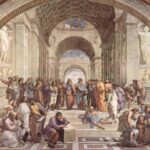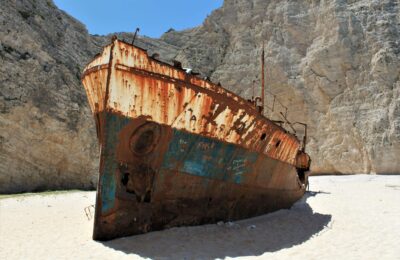Akbar is the most important Patron of the miniature
Under the rule of Akbar, the Great, the Mughal Empire reached in miniature. Despite being purportedly illiterate, Akbar patronized the arts, fostering a flourishing cultural environment characterized by poetry, miniatures, and architecture. Miniatures are the most important type of art during the Mughal reign. MIniatures reached its golden age during his time
Fusion of different artistic styles
During Emperor Akbar’s rule, there was notable progress towards establishing a society characterized by religious tolerance. This environment facilitated the fusion of Persian, Indian, and European artistic styles. The imperial workshop experienced a surge in talented painters, calligraphers, and specialists in portraiture, among others. They collaborated on various illustrated books housed within the Ketabkhana, or house of books, an initiative that was enthusiastically endorsed by Emperor Akbar. After completing two manuscripts, Emperor Akbar commissioned the creation of the Akbar Nama, authorized by Abu’l Fazl, which chronicled his legendary accomplishments and the history of his empire.
The themes of these magnificent miniatures
The painting captures a moment of tension, depicting the architectural context of the Agra Fort in the background, while the foreground portrays a chaotic scene with an outburst and the river Jumna flowing furiously. The artists have paid meticulous attention to detail, even enhancing the situation’s intensity with the depiction of the flowing river.
Akbar’s adventures with the elephant Hawa’i- from Akbar Nama (1590-95)
The scene depicts a famous incident from 1561 involving two fierce elephants, Ran Bagha and Hawa’i, the latter being mounted by Akbar himself. Barefoot and valiant, Akbar confronts the situation head-on, showcasing his majestic power and heroism. Surrounding him are people attempting to escape, some injured and others fleeing by boat or into the river Jumna.
Another side of this magnificent miniature
On the other side of the page, the audience is shown in a state of shock as they witness the collapse of a bridge. Among them is the royal minister Ataga Khan, depicted with joined hands, praying for the situation to be resolved. The painting illustrates a hierarchy of characters, from Emperor Akbar to Ataga Khan, royal court members, troops, and servants. This miniature painting represents a progression in Mughal art, displaying a heightened sense of realism and authenticity. The depiction of the red sandstone facade of the Agra Fort alongside the onlookers from atop the fort highlights the growing architectural legacy and its significance within the Mughal Empire

Shah Jahan’s commissioned manuscripts
Shah Jahan commissioned the Padshahnama, a manuscript recording daily life at the royal court, featuring magnificent durbars, processions, and victories. Authored by Abd al-Hamid Lahawri and illustrated by Shah Jahan’s masterly artists, the Padshahnama comprises single-page and 11 double-page miniature paintings, offering a vivid portrayal of his reign’s grandeur.
Shah Jahan receives his three eldest sons and Asaf Khan during his accession ceremonies by Bichitr and Ramdas
The depicted double-page miniature painting from the Padshahnama is adorned with arabesque designs in metallic gold paint. It captures the joyful accession ceremony of Shah Jahan, seated on a stepped jharokha, warmly receiving his three eldest sons and Asaf Khan on one side of the page. The background showcases marble with colorful Pietra dura and intricate textiles, creating a sense of hierarchy between the royal members and the gathered public.
The artist’s detailed depiction of the miniature
The artists skillfully portray the rigidity of the ceremony, depicting detailed rituals and attendants holding imperial insignia amidst enchanting prayers by holy men. On the opposite side, outdoor celebrations unfold with all participants elegantly dressed and adorned animals. Bright colors bring the procession to life against the backdrop of the Agra Fort’s carved marble and red sandstone chattri’s cusped arches, highlighting the opulence and grandeur of Shah Jahan’s monarchy in the miniature painting.

Conclusion
- The golden age of the miniature includes the fusion of various artistic styles.
- Illustrations of manuscripts like Akbar Nama and Padshahnama.
- The Artist’s detailing of the theme is Marvelous and often shows the essence of the subject.
- Bright colors and architectural backgrounds are used in these Marvelous miniatures.







